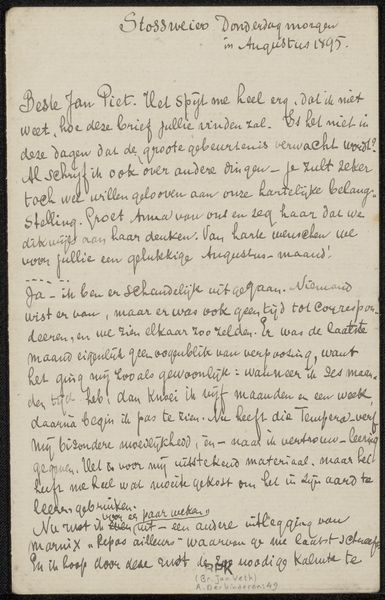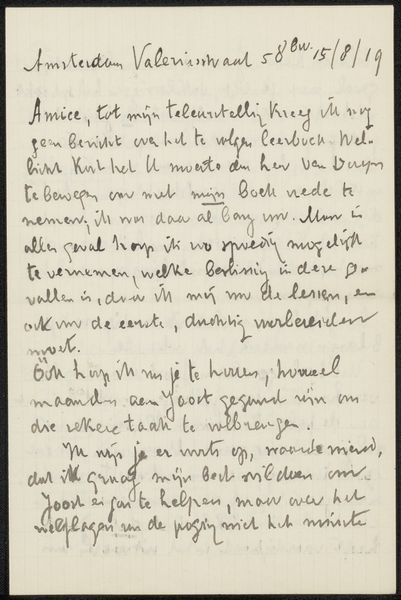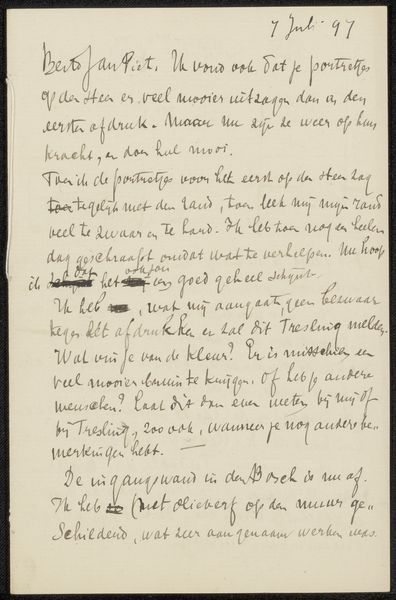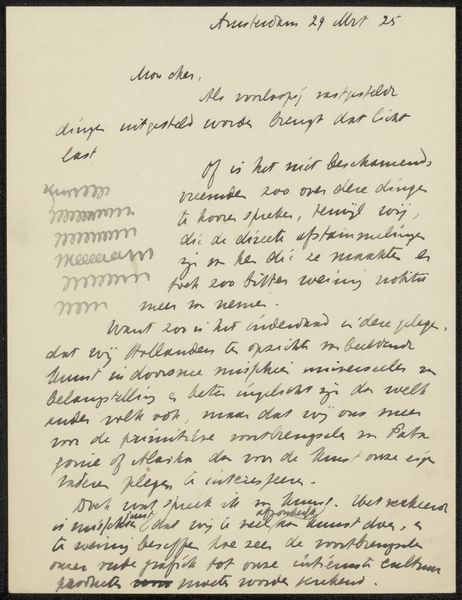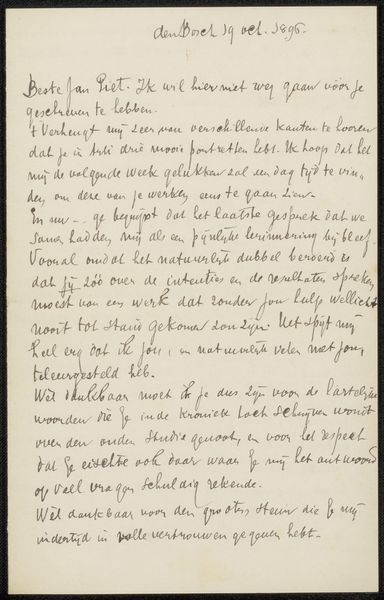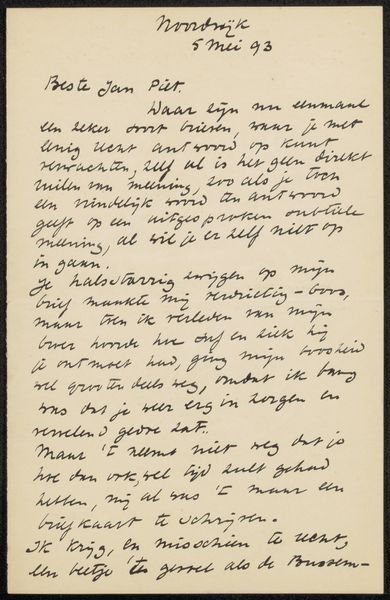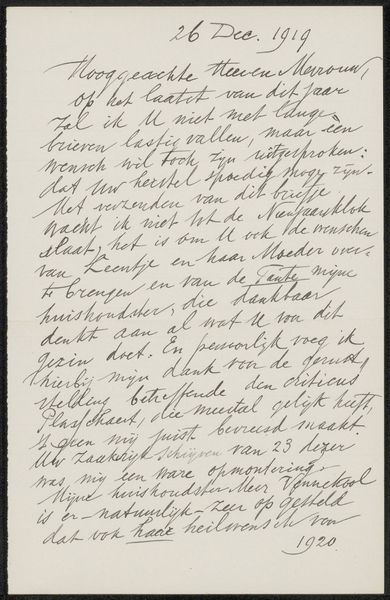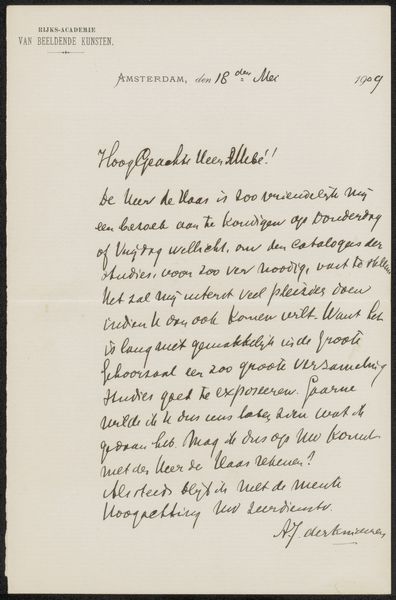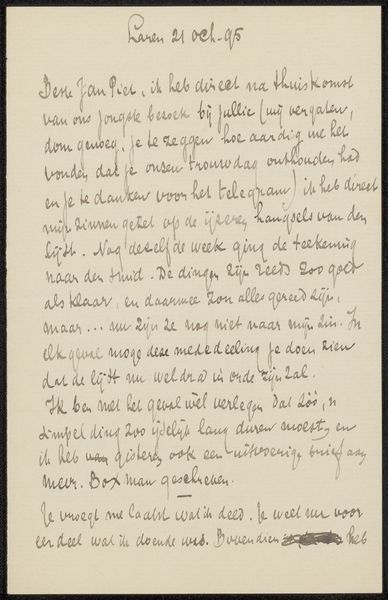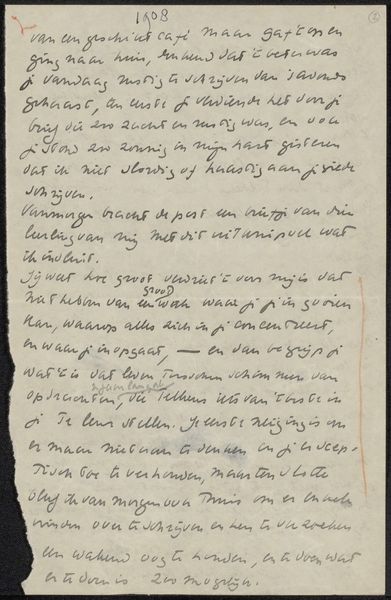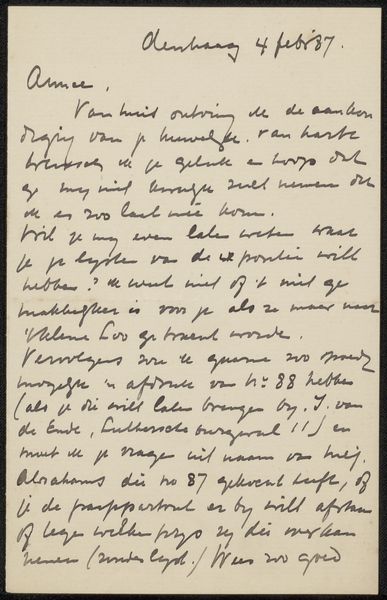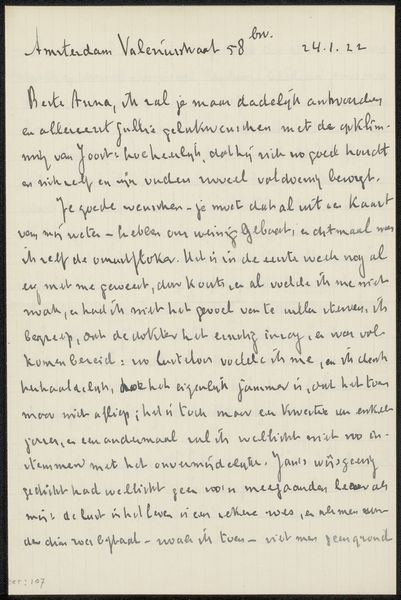
drawing, paper, ink, pen
#
portrait
#
drawing
#
hand-lettering
#
hand drawn type
#
hand lettering
#
paper
#
ink
#
pen-ink sketch
#
sketchbook drawing
#
pen
#
calligraphy
Copyright: Rijks Museum: Open Domain
Curator: Antoon Derkinderen's "Brief aan Jan Veth," created sometime between 1874 and 1925, offers us an intimate glimpse into the artist's personal correspondence. The medium here is simple: ink on paper. Editor: It strikes me immediately as both raw and intensely personal. It feels like stumbling upon someone's innermost thoughts captured on a page, that hurried scrawl! There's a vulnerability here. Curator: Considering Derkinderen’s association with socialist ideals and his belief in the artist's social responsibility, a letter such as this unveils the interpersonal dynamics within intellectual circles. What we see materially is handmade typography in the tradition of calligraphy. Editor: Ah, so it's not just a rushed note. This 'handmade typography' suggests a care for the craft, a conscious artistry even in this informal setting. There is something very performative happening here, in this written act, where penmanship conveys something beyond the literal text. Curator: Exactly. This brings a different context into view: Derkinderen's practice moves past conventional notions of 'fine art' because here the medium is really about its accessibility for everyday exchanges. The letter is also heavily edited, we can infer censorship when five words were redacted by the sender from a February 7th letter. Editor: Censorship indeed...and a layer of hidden meanings or intentional silences enters the chat. What was redacted, and why? Also what are the implications and considerations, here, of making private correspondence like this, public? Curator: Well, there’s an inevitable friction that occurs whenever private correspondence gets archived. It raises some difficult questions about the ethical responsibilities of preserving materials in archives... Editor: This act of publicizing becomes part of the life of the document, forever shifting how we understand not just the words themselves, but also that original intent... Curator: And with that in mind, hopefully our listeners will pause on that ambiguity and reflect on the layers of this drawing. Editor: Indeed—a reminder that even the simplest materials, a pen and a piece of paper, can hold complex histories, don't you think?
Comments
No comments
Be the first to comment and join the conversation on the ultimate creative platform.
